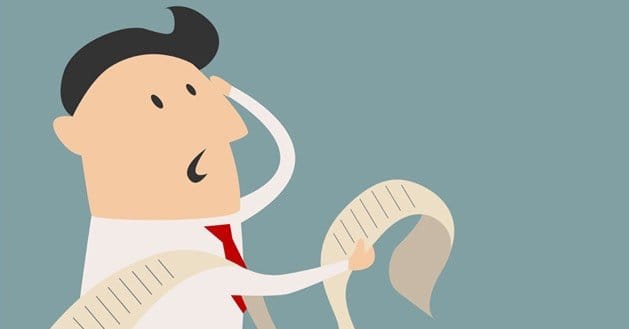 Written by ContentPowered.com
Written by ContentPowered.com
Fake likes are a problem endemic to Facebook. They’re something that has plagued the site since the concept of likes mattering to businesses first came about, years and years ago. They’re still a problem today, though the people who sell or provide fake likes have gotten more sophisticated.
Why Fake Fans are Dangerous
Fake likes, fake followers, fake fans; they’re all dangerous. The reason is the way Facebook’s algorithm works. Facebook picks a selection of people who follow you to show each post to. Users who are engaged with your brand have a higher chance of seeing your posts. Users who barely interact with your brand have a lower chance. Users who never interact beyond their initial follow have an even lower chance.
If it were a simple filter, it would be easy. Fake fans would sift to the bottom, never see your posts, and remain worthless in every way. Unfortunately, Facebook’s algorithm isn’t a simple filter.
Instead, Facebook picks a random selection of fans, partially based on that algorithm. Fake fans can see your messages in their news feeds. The problem is, every fake fan that sees your message is a real fan who missed it. The more fake fans you have, the harder it becomes for real fans to see your posts.
Even this might not be that much of a problem, unless you had a massive number of fake fans that outweighed your real fans. The problem is, fake fans are also detrimental in other ways. All of your metrics go down, for example. Anything based on a percentage counts those fake fans, and those fake fans drag your legitimate metrics down.
Fake fans, of course, will never engage with your posts. They never click through to your website. Most of all, they never sign up for your mailing list or buy your products. They are essentially immune to your sales funnel, because they don’t exist. It’s like standing on a podium to give a lecture to a crowd and sell your product on stage, only to discover that two thirds of the seats are filled with mannequins.
When you’re caught buying fake fans, you can be punished. Facebook won’t likely block your page or actively punish you, but competitors can use the information against you. Your real fans, learning that you bought fake fans, feel devalued.
Facebook is also known to go through and delete the accounts of fake fans by the thousands. When these purges happen, your follower count can drastically decrease. This will be noticed and remarked upon, which leads to all of the detriment mentioned above.
Identifying Fake Fans
You can check in several ways to see if the fans following your page are fake. If your page has hundreds of thousands of followers, but your posts only get one or two comments, your messages aren’t reaching the people who care. This might be because of low engagement due to boring posts, or it might be due to fake fans seeing your posts more than real fans.
You can also check through and see what the person behind a given account looks like. Fake fans typically do not have profile pictures and have very little information posted to their page. Conversely, they “like” thousands or hundreds of thousands of pages. This combination of little information and a huge liked pages count indicates a fake account.
Some pages get a little more tricky. They might use images of non-people, making it harder to identify whether they’re real or not. Again, check how active the fan is. If they never post anything and they like a ton of pages, they’re probably fake.
Some fake fans are real people, typically from developing nations, who are paid to use Facebook all day. They are simply handed lists of pages and asked to like every page on the list. These accounts might be more legitimate, actually in use by the people who run them, so they can be harder to identify. Foreign names are one signifier, though that alone isn’t a sign of a fake fan. Don’t just blindly remove all foreign-sounding names from your follower list, that would be racism.
As always, check to see how many pages a given user likes. A few hundred liked pages is fine. It’s easy enough to rack that up, particularly when it’s left over from the days of like-gated content. A few thousand or tens of thousands of liked pages, now, that’s less likely to be legitimate.
Dealing With Fake Followers
We have written before about the troubles with removing fake likes from your Facebook page, and unfortunately, since that writing there haven’t been any updated methods for removing followers in bulk.
Manually, the best you can do is go through your followers in the social graph and identify any fake followers. Remove them and continue expanding the list until Facebook no longer allows it. Once you’ve gone through as many as possible, you may be able to refresh the page and go through a few more, equivalent to the number you removed. I’m honestly not sure if Facebook allows the list to update in that manner or not.
Another option, if you’re lucky, is to change age or alcohol restrictions and back. If the majority of your fake followers are from an alcohol-restricted country, setting an alcohol warning on your page will automatically remove them. Unfortunately, it will also remove legitimate followers if they are underage. There’s nothing you can do about that.
Otherwise, the only real option you have available is to immediately stop any fake follower purchases, block fake follower countries such as Bangladesh, Turkey and India, and remove what followers you can. Moving forward, the best option is just to outweigh the fake followers with real, interested followers.
Hopefully, Facebook will come through and audit their member list, removing many of the like-farming fake user accounts. These are easy enough to spot, as mentioned above; a huge number of likes alone is suspicious as it is. Sooner or later, the fake accounts following your page will be removed.
